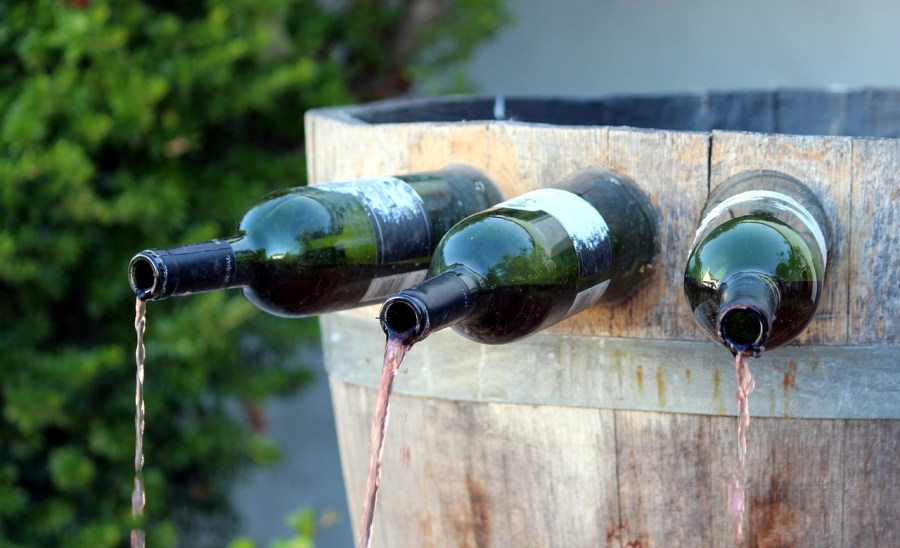How Many Millimeters Are in a 75 cl Bottle of Wine?

In liquid measures, 75 centiliters (cl) equates to 750 millimeters (ml) and a 75 cl bottle of wine is internationally recognized as being the standard commercialized volume for all wine varieties.
The metric system is used to measure volumes in standard bottles of wine, with a centiliter being a hundredth of a liter and a millimeter being a thousandth of a liter. If you see the volume depicted in millimeters, divide the number by 10 to get the amount in centiliters. The United States has used this metric measurement since the 1970s. A standard bottle at 75 cl equals 0.264 gallons or 25.4 ounces of wine. In nonmetric terms, that’s approximately 1.5 pints.
How Many Servings Are in a Bottle of Wine?
On average, when calculating how much wine you’ll need for a party, estimate that each bottle allows for five 150 ml servings. This ensures you overestimate the amount of wine poured because, in general, most people can get six glasses of wine out of a standard bottle using 125 ml servings. Some wines are exceptions to this, however, due to the high alcohol content. You can pour 10 glasses of port wine, for example, from a bottle.
How Much Wine Should be Served?
When drinking wine normally at home, rather than in a party environment, you’ll more than likely enjoy a larger serving of 175 ml. This means you’ll get slightly more than four glasses of wine from a 75 cl bottle.
In bars and restaurants, servings vary between 125 ml, 175 ml, and 250 ml, with the latter being a third of a wine bottle.
At wine tastings, the servings are much smaller. Expect to receive servings of about 60 ml each, allowing you to enjoy about 12 different tastings.
How Many Calories Are in a Bottle of Wine?
It’s not easy to determine how many calories are in a bottle of wine because it depends on how much sugar has been added, the grape type, and the length of time for which the wine is fermented.
The U.S. Department of Agriculture (USDA) has specified an average amount of calories for different wine types. A bottle of average red table wine has about 625 calories while a bottle of cabernet sauvignon, merlot, or Syrah has about 610 calories in a bottle.
Average white table wines contain about 605 calories in each bottle while a bottle of Riesling has a lot less, at 590 calories. A bottle of sauvignon blanc contains 595 calories compared with chardonnay, which has 615 calories.
The same size bottle of dessert wine, however, has a much higher caloric content. An average sweet dessert wine has 1,205 calories per bottle, whereas a dry dessert wine has 1,146 calories in the bottle.
These liquid calories in wine are derived from the alcohol and sugar. They are easy to disregard because drinking wine doesn’t feel the same as consuming calories from eating food.
You should also check the alcohol content to ascertain the caloric content. Higher alcohol levels have more calories than wines with less alcohol. This is because there are seven calories per gram of alcohol. Note that low-alcohol wines contain more carbohydrates. Carbohydrates have four calories per gram.
The Different Types of Wine Bottles
As well as the standard size of wine bottle, there are numerous other sizes. A half, split, or demi bottle is 375 ml while a magnum is double the size of a standard bottle. A double magnum, or jeroboam, is 3 liters and a jeroboam bordelais is 5 liters. Imperial and methuselah bottles hold 6 liters while a salmanazar bottle holds the same as a case of wine, 9 liters. Sizes continue to increase up to 30 liters for a melchizedek bottle size.
Different Wine Bottle Shapes
The most basic wine bottle shapes are a Bordeaux bottle, Burgundy bottle, and Alsace flute. They look different from each other but hold the same volume of wine.
Wineries often use Alsace flutes for highly scented white wines and Burgundy bottles for chardonnay, tempranillo, Syrah, pinot noir, and Rhone blends. All other wines are generally placed in Bordeaux bottles.





